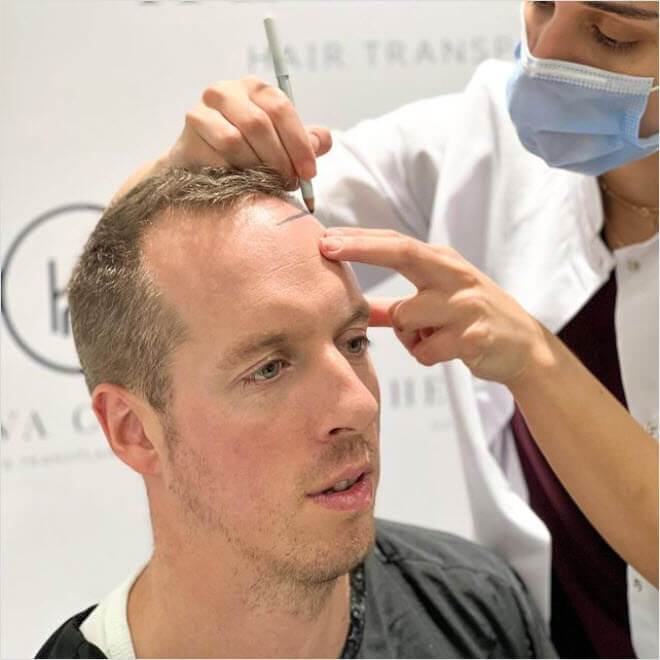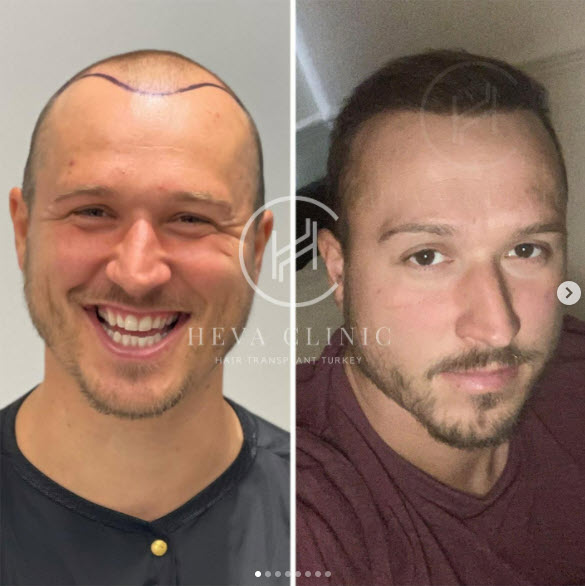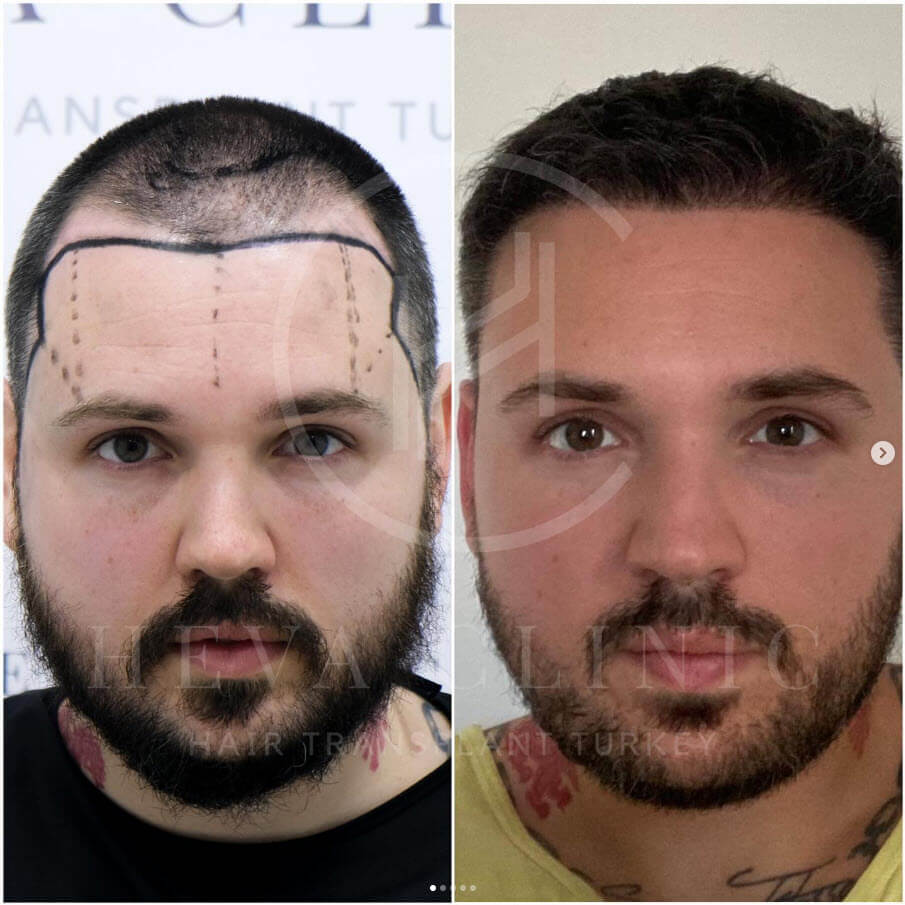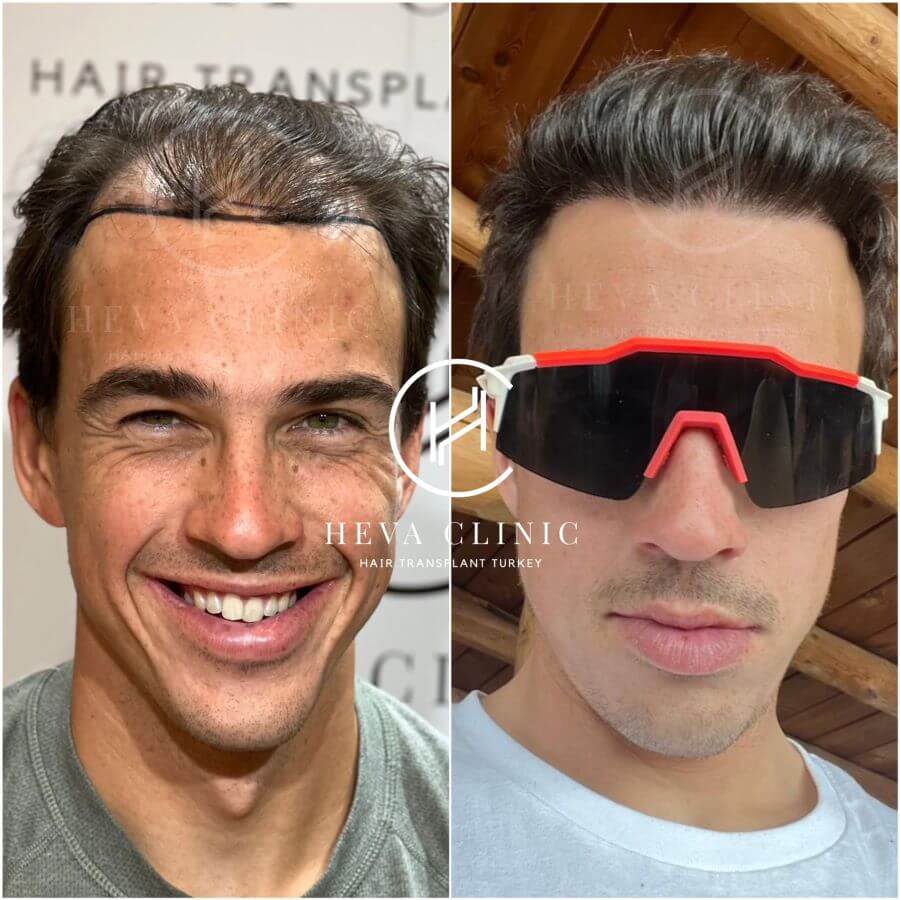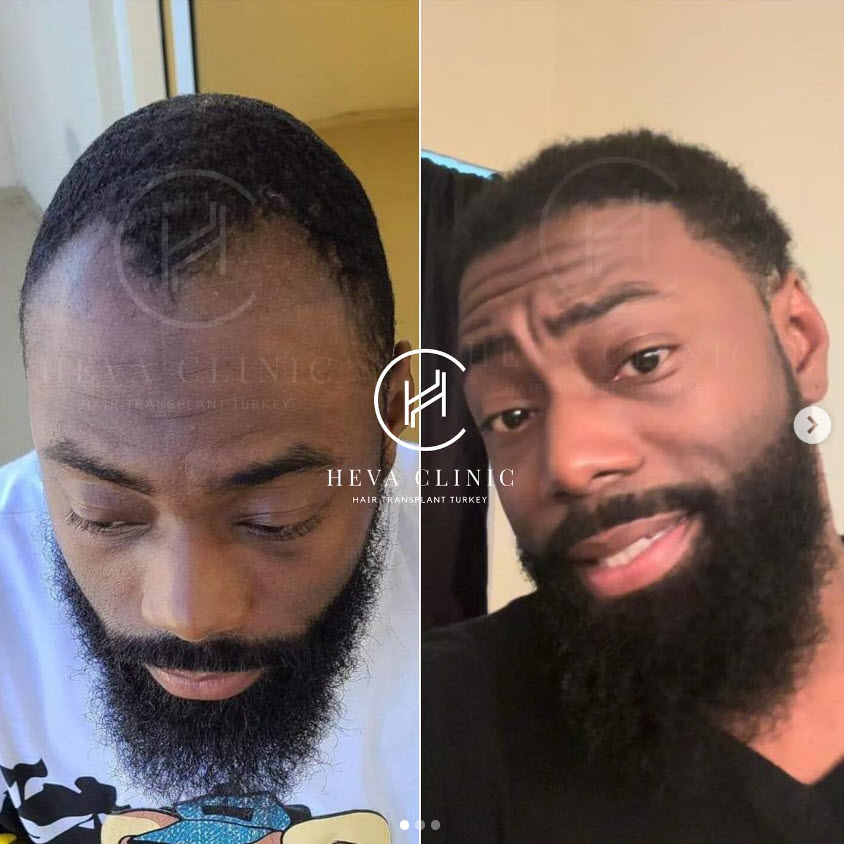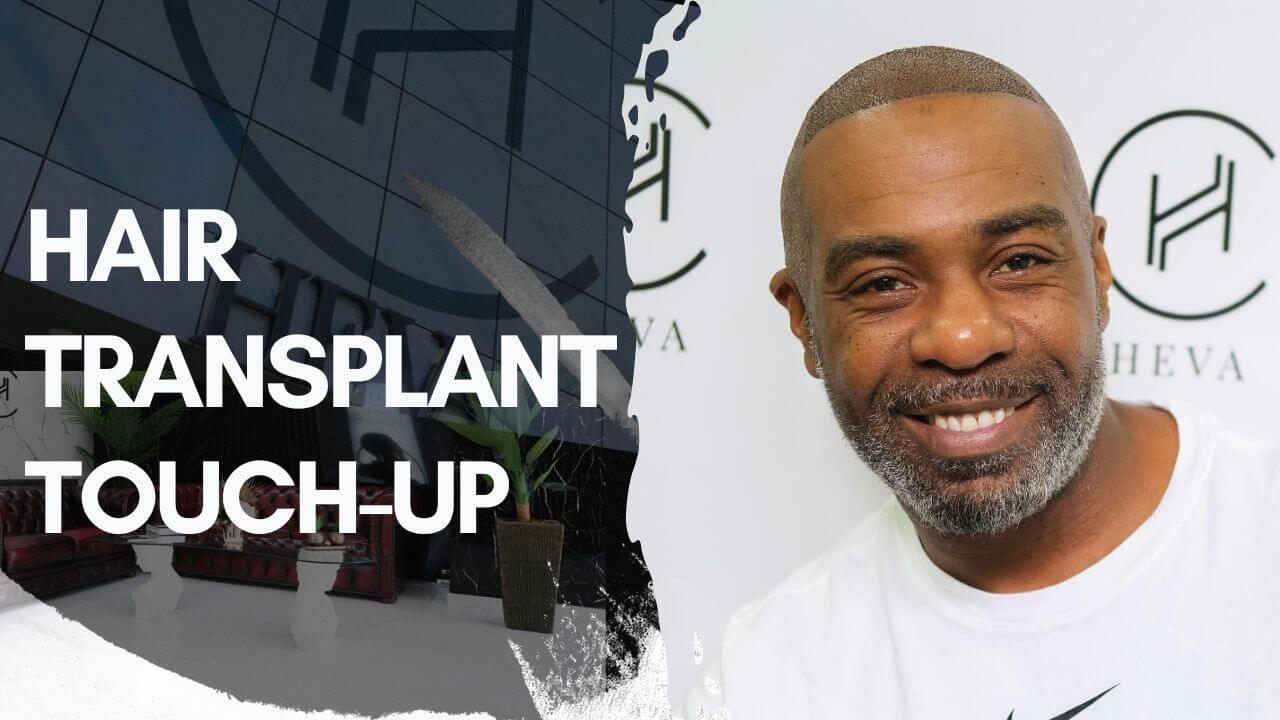
Touch-up hair transplantation is known as the second procedure. It involves placing additional grafts taken from the donor area into the same desired area where the extracted hair was originally transplanted during the first hair transplantation. This session is generally conducted to densify or fix the recipient area.
For the procedure, we typically need 500 to 1000 grafts. It can provide more density and natural-looking results. However, we advise patients to monitor the improvement in bald areas with realistic expectations.
Do all hair transplants need touch ups?
Touch-up after hair transplantation is a common procedure, but not all hair transplants need a touch-up session.
In a clinic with inexperienced and ill-equipped surgeons who do not understand the patient’s expectations well enough, there is a risk of encountering unnatural and unsatisfactory outcomes.
In some cases, the scalp may reject the new grafts or react with sensitivity, which can also require a follow-up session. Aftercare is also a key factor: following post-op instructions properly can be just as important as the surgery itself in determining long-term success. Patients should be informed of these important points and risks before the operation.
Sometimes, even with a successful procedure, the number of grafts extracted may not be enough to fully cover areas with severe hair loss. This can happen if the donor area is limited or the patient chooses a more conservative approach. A minor second procedure can help improve density or refine the hairline for a more complete and natural look.
Who needs a hair transplant touch up?
Patients with the following problems may be a good candidate for touch-up session after a hair transplant surgery:

Who is eligible for a hair transplant touch up?
There are 5 key factors that determine if a person is a good candidate for hair transplant surgery. The followings are worth considering in order for the hair transplant operation to be successful:
1- Donor Area Suitability:
Classic male and female pattern baldness covers the sides and back of the head. These areas are suitable for hair transplants and are called donor sites. If the number of healthy donor hair is sufficient, the patient can be eligible for the operation.
Unfortunately, Diffuse Patterned Alopecia (DUPA) lacks a stable donor site and is not suitable for surgery.
2- Age:
It is the only cause of hair loss that affects everyone. As we get older, hair loss occurs and hair growth decreases. Ideal candidates for hair replacement techniques are over 25. Due to the aggressive nature of hair loss, those under the age of 25 can initinally explore alternatives to hair transplant such as medical treatment and other non-surgical hair loss treatments.
3- General Health:
It is essential to be in good overall health for better healing of the hair transplant and to prevent any complications. Some possible contraindications include uncontrolled diabetes or hypertension, active autoimmune diseases, allergies to topical anesthesia, serious systemic or scalp infections and new childbirth.
4- Hair Loss Stability:
Surgery is usually recommended when hair loss has stabilized. Transplanted hair continues to hair growth resumes after a certain time when the healing process of the operation starts.
After a successful hair transplantation, hair loss should stabilize around 90% and the hair follicles should have adapted to the new location. In addition, rapidly progressive hair loss may require medical treatment before surgery.
5- Hair Characteristics and Density:
All hair types has their own hair caliber, curl and color so the procedure should be planned accordingly. For example, the Afro hair transplant technique is suitable for people whose hair is distinctly curly.
Generally, better coverage can be achieved with thicker hair types. Additionally, patients with low contrast between hair and skin color have an advantage.
Donor hair density should be at least 80 grafts per cm², and patients with hair density less than 40 grafts/cm² may have poor results, making them potential candidates for a touch-up hair transplant.
How long after the initial transplant should I consider a touch-up?
It can take up to 6 months for new hair growth to become noticeable. Some patients who experience shock hair loss in the first two weeks after transplantation may believe that their surgery has failed. However, shock hair loss is part of the normal routine of the hair transplant recovery process. There is no need to worry and think about retouching immediately.
You need to observe your hair growth in the bald areas for at least 8-10 months, and if your hair falls too much even after that, then you can consider a touch-up hair transplant.
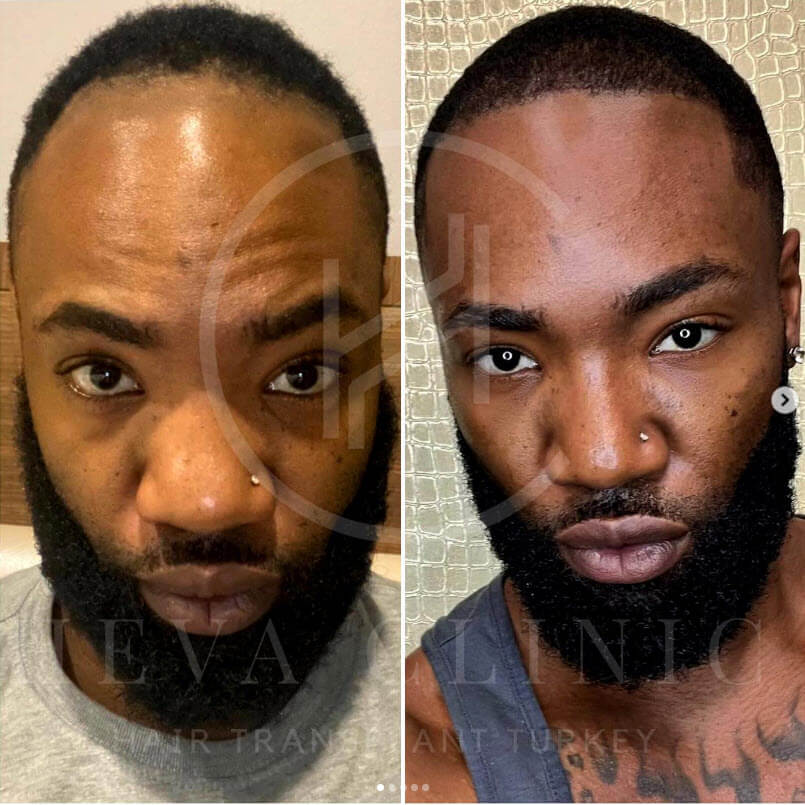
How does a hair transplant touch up work?
Here is the steps of a touch-up after a hair transplant:
First of all, the medical team at the clinic needs to evaluate the results of the first hair transplant surgery to create a new roadmap.
The professionals will decide if retouching is suitable for the patient. This includes assessing the condition of the donor area to ensure that there are enough follicles for transplantation, calculating the number of hair needed, assessing the patient’s current health status such as blood pressure and contegious diseases.
The expert talks openly with the patient about the situation, explains the problems with the first transplant and what can be achieved with the retouching procedure. They inform the patient about the plan and shares possible complications such as swelling, small scabs, and more.
According to the plan, the surgeon performs a touch-up hair transplant session.
Follicles are extracted from the donor site and transplanted to the recipient site using the FUE (Follicular Unit Extraction) technique. The surgeon can correct the density of the hair, eliminate the irregularities in the hairline, refill the surrounding area with new follicles, use the tissue expansion technique with a tissue expander, adjust the follicle orientations, and hide the scars.
After the touch-up procedure, the medical team closely monitors the patient’s healing and hair growth. They make follow-up appointments to assess progress and address concerns. They follow the patient’s recovery for several weeks and may give the patient a list of situations to avoid after surgery, such as strenuous activity.
Frontline hair transplant touch up
Male pattern balding is visible especially in the front of the head. It starts to recede backwards from the sides. If the frontline hair transplant was not successful in the first procedure, the patient needs a frontline hair transplant touch-up. In this case, mini grafts, often taken from the back and sides of the head, are transplanted to the frontline.
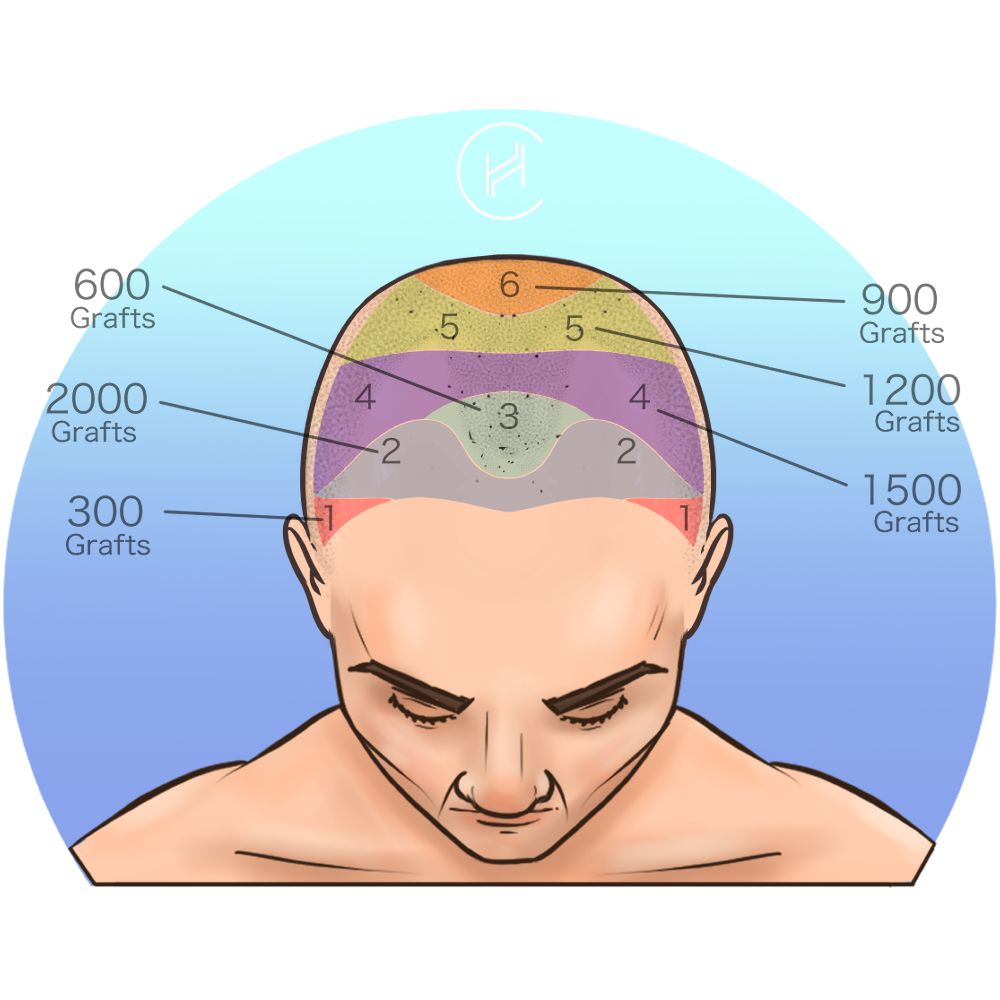
How much does a hair transplant touch up cost?
Hair transplants in Turkey have great options for every budget. With “all-inclusive” packages, an economical choice is created for each patient. These hair transplant packages include initial briefing, consultation, planning, necessary medications, post-op care, pre-op blood test, accommodation and all transfers.
The cost of hair transplant touch-up in Turkey ranges from $2000 – $3000 depending on the case of the patient.
How does the recovery process differ between initial transplants and touch-ups?
The healing process for first hair replacement and touch-ups is similar. The main difference is the extent of healing and special care considerations rather than the timeline:
- In the first procedure, the surgeon treats a larger portion of the scalp, whereas in the second procedure, the surgeon focuses only on the areas that have not achieved an optimal appearance. Therefore, the recovery time for touch-ups is shorter. However, sometimes, surgeons can also perform touch-ups to correct gaps after scalp reduction. In such cases, the healing process can be prolonged.
- The healing process is usually shorter in retouched patients and they can overcome problems like swelling more easily and completely return to their normal activities in several weeks.
- Postoperative care is generally easier with touch-ups. Since surgical trauma is much less, patients recover quickly as long as they follow their care routine and follow up visits.
- Final results appear sooner and are more successful with retouches. On the other hand, the first transplants may take longer to fully mature and show the best results.
How to find your clinic for a hair transplant touch up?
Choosing a reputable clinic is one of the most crucial factors for hair transplant surgery. To avoid the need for touch-ups or corrective procedures, it is necessary to choose a reputable clinic with a well-trained and skillful medical team.
Clinics like HEVA, known for its expertise in most hair transplants, can help minimize the risk of any complications, keep you well-informed and ensure satisfactory results from the start. Reach the medical team to start the process now!

